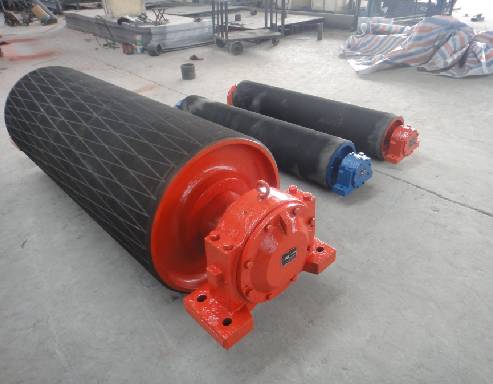 Afrikaans
Afrikaans  Albanian
Albanian  Amharic
Amharic  Arabic
Arabic  Armenian
Armenian  Azerbaijani
Azerbaijani  Basque
Basque  Belarusian
Belarusian  Bengali
Bengali  Bosnian
Bosnian  Bulgarian
Bulgarian  Catalan
Catalan  Cebuano
Cebuano  Corsican
Corsican  Croatian
Croatian  Czech
Czech  Danish
Danish  Dutch
Dutch  English
English  Esperanto
Esperanto  Estonian
Estonian  Finnish
Finnish  French
French  Frisian
Frisian  Galician
Galician  Georgian
Georgian  German
German  Greek
Greek  Gujarati
Gujarati  Haitian Creole
Haitian Creole  hausa
hausa  hawaiian
hawaiian  Hebrew
Hebrew  Hindi
Hindi  Miao
Miao  Hungarian
Hungarian  Icelandic
Icelandic  igbo
igbo  Indonesian
Indonesian  irish
irish  Italian
Italian  Japanese
Japanese  Javanese
Javanese  Kannada
Kannada  kazakh
kazakh  Khmer
Khmer  Rwandese
Rwandese  Korean
Korean  Kurdish
Kurdish  Kyrgyz
Kyrgyz  Lao
Lao  Latin
Latin  Latvian
Latvian  Lithuanian
Lithuanian  Luxembourgish
Luxembourgish  Macedonian
Macedonian  Malgashi
Malgashi  Malay
Malay  Malayalam
Malayalam  Maltese
Maltese  Maori
Maori  Marathi
Marathi  Mongolian
Mongolian  Myanmar
Myanmar  Nepali
Nepali  Norwegian
Norwegian  Norwegian
Norwegian  Occitan
Occitan  Pashto
Pashto  Persian
Persian  Polish
Polish  Portuguese
Portuguese  Punjabi
Punjabi  Romanian
Romanian  Russian
Russian  Samoan
Samoan  Scottish Gaelic
Scottish Gaelic  Serbian
Serbian  Sesotho
Sesotho  Shona
Shona  Sindhi
Sindhi  Sinhala
Sinhala  Slovak
Slovak  Slovenian
Slovenian  Somali
Somali  Spanish
Spanish  Sundanese
Sundanese  Swahili
Swahili  Swedish
Swedish  Tagalog
Tagalog  Tajik
Tajik  Tamil
Tamil  Tatar
Tatar  Telugu
Telugu  Thai
Thai  Turkish
Turkish  Turkmen
Turkmen  Ukrainian
Ukrainian  Urdu
Urdu  Uighur
Uighur  Uzbek
Uzbek  Vietnamese
Vietnamese  Welsh
Welsh  Bantu
Bantu  Yiddish
Yiddish  Yoruba
Yoruba  Zulu
Zulu conveyor pulley price
Understanding Conveyor Pulley Prices Factors and Insights
In the world of industrial machinery, conveyor systems play a crucial role in ensuring efficient operations. At the heart of these systems lies the conveyor pulley, an integral component that facilitates the movement of materials. As industries increasingly optimize their supply chains and production processes, understanding the pricing of conveyor pulleys becomes essential for budgeting and procurement. This article delves into the key factors that impact conveyor pulley prices and offers insights for companies looking to make informed purchasing decisions.
What is a Conveyor Pulley?
A conveyor pulley is a cylindrical device that rotates and drives the conveyor belt forward. It is usually found at the head (drive pulley) and tail (return pulley) of a conveyor system, but additional pulleys may be used for various purposes, including tensioning the belt or redirecting its path. The effectiveness and durability of a conveyor system largely depend on the quality and type of pulleys used, making it a critical investment for any operation that relies on material handling.
Key Factors Influencing Conveyor Pulley Prices
1. Material Quality The materials used in manufacturing conveyor pulleys significantly affect their price. Most pulleys are made from steel, but variations exist, including aluminum and composite materials. Higher-quality materials can endure harsh operational conditions and will generally command a higher price. Conversely, lower-quality materials may save money upfront but lead to increased maintenance costs and shorter lifespans.
2. Size and Specifications The size of the pulley, including diameter and width, influences its cost. Larger pulleys that can handle heavier loads typically cost more due to the increased amount of material used and the complexity of manufacturing. Additionally, specific configurations, such as crowned or flat pulleys, can also affect pricing.
3. Type of Pulley Different types of pulleys serve unique purposes, and their functions can determine their pricing. For instance, drive pulleys are often engineered for maximum power transfer and may incorporate features like lagging for enhanced traction. Specialty pulleys with advanced engineering or additional features, such as self-cleaning designs or those made for specific applications, can be significantly more expensive.
conveyor pulley price

4. Manufacturing Process The method by which a conveyor pulley is produced can also impact its price. Pulleys may be fabricated through casting, forging, or machining, each method having varied costs associated with it. Advanced manufacturing techniques that enhance durability may justify higher prices but can result in longer-term savings when it comes to maintenance and replacement.
5. Market Demand and Supply Like any commodity, the price of conveyor pulleys can fluctuate based on market demand and supply. During periods of high demand, such as increased industrial activity, prices may rise. Conversely, during economic downturns, prices might decrease due to reduced demand.
6. Supplier Reputation and Location The reputation of the supplier can affect pricing. Well-established companies often have higher prices due to their brand value and the perceived quality of their products. Additionally, geographic location plays a role; local suppliers may have different logistics costs compared to international manufacturers, affecting overall pricing.
7. Customization and Additional Features Custom-designed pulleys tailored to specific needs often come at a premium. Additional features, such as enhanced safety aspects or advanced materials that offer resistance to environmental factors, can also lead to increased costs but may provide long-term benefits.
Making Informed Decisions
For companies looking to purchase conveyor pulleys, understanding these factors can lead to more informed decisions. It's crucial to identify the operational requirements and long-term goals before making a purchase. Engaging with multiple suppliers to compare prices and specifications, as well as considering the total cost of ownership—including maintenance and durability—will ensure that the investment yields the best value over time.
In conclusion, while the price of conveyor pulleys can vary significantly based on numerous factors, a clear understanding of these elements can help businesses make better purchasing choices. By considering the quality, size, type, manufacturing process, market dynamics, supplier reputation, and customization options, companies can navigate the complex landscape of conveyor pulley pricing and ultimately optimize their conveyor systems for peak performance.
-
Revolutionizing Conveyor Reliability with Advanced Rubber Lagging PulleysNewsJul.22,2025
-
Powering Precision and Durability with Expert Manufacturers of Conveyor ComponentsNewsJul.22,2025
-
Optimizing Conveyor Systems with Advanced Conveyor AccessoriesNewsJul.22,2025
-
Maximize Conveyor Efficiency with Quality Conveyor Idler PulleysNewsJul.22,2025
-
Future-Proof Your Conveyor System with High-Performance Polyurethane RollerNewsJul.22,2025
-
Driving Efficiency Forward with Quality Idlers and RollersNewsJul.22,2025





























